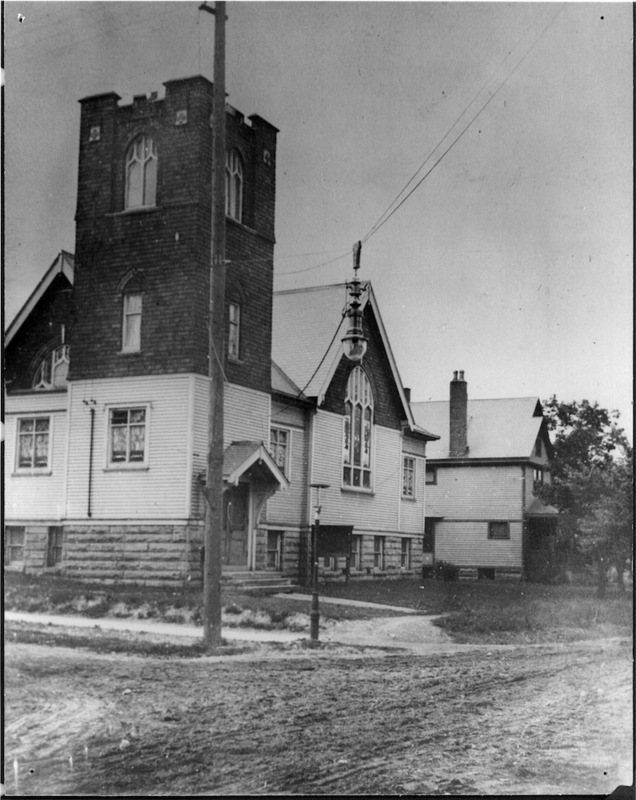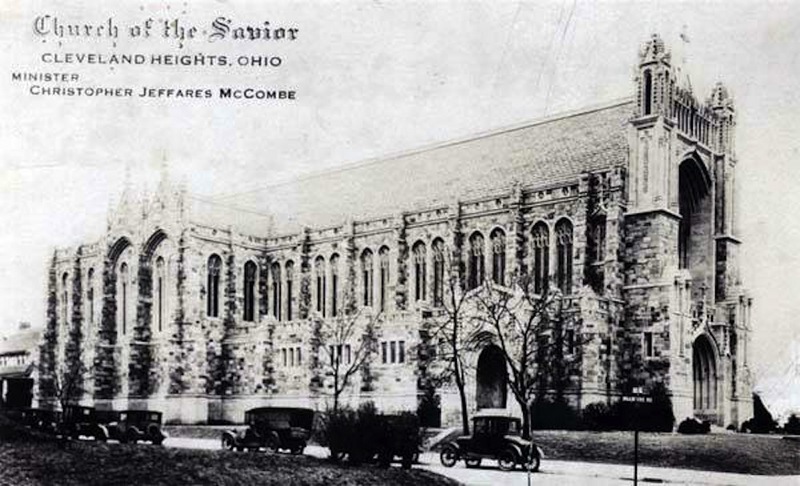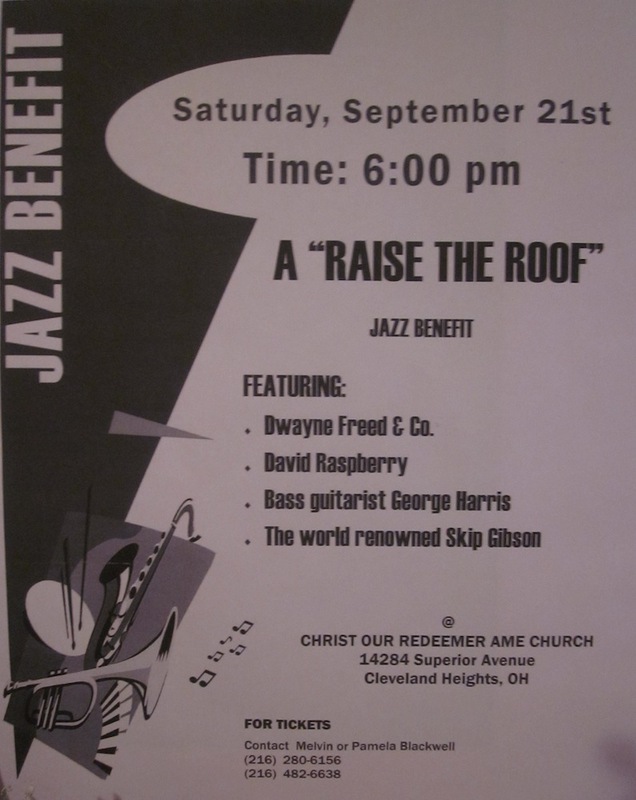
In the summer of 1981, the choirs of St. John's and St. James A.M.E. churches, two historic African American congregations on Cleveland's east side, joined together in the octagonal sanctuary at the inaugural service of Christ Our Redeemer A.M.E. Church. Named after the African Methodist Episcopal motto, "God our Father, Christ our Redeemer, and Man our Brother," this sacred landmark was originally dedicated as Cleveland Heights Methodist Episcopal Church on September 18, 1904. Designed by Sidney R. Badgley and William H. Nicklas, the church included a Sunday school space set apart from its octagonal sanctuary by movable partitions, an arrangement known as the "Akron Plan" (named for its origination in Akron, Ohio, in the 1860s and also adopted in Badgley's 1894 design of Pilgrim Congregational church in Tremont). The clapboard- and shingle-sided Gothic Eclectic building, distinguished by its battlemented corner tower overlooking Superior and Hampshire roads, is the oldest standing house of worship in Cleveland Heights.
Cleveland Heights Methodist Episcopal Church arose from efforts of the Nottingham-Glenville Circuit of the Methodist Church, which erected an earlier brick church near the old Superior Schoolhouse, in 1878. At that time the surrounding area was still derisively dubbed "Heathen Heights" because of the notorious weekend carousing of the area's stone quarry workers. Originally called Fairmount Methodist Episcopal Church because of its site near the town center of Fairmount, the congregation took the new name of Cleveland Heights Methodist Episcopal Church in 1904 upon the dedication of its new building, a reflection of the founding of Cleveland Heights village earlier that year. After quintupling its membership in just two decades, the congregation departed to a massive new Gothic building on Lee Road in 1927 and became the Church of the Saviour. Thereafter the old building housed the First Church of the Brethren for the next several decades.
Just as the soaring suburban population of the Heights in the 1910s and 1920s made the little church too small to hold Sunday services, the growing African American presence in north-central Cleveland Heights, drawn to better housing from Glenville and East Cleveland a half century later, made the area a logical place for the African Methodist Episcopal Church to create its first suburban mission in Greater Cleveland (apart from the longstanding New Bethel A.M.E. in then-rural Oakwood Village). Christ Our Redeemer A.M.E. emerged as a joint project of the ministers and laity of the North Ohio Conference of the African Methodist Episcopal Church. The mission leased its building from First Church of the Brethren and opened with a mere seven congregants in July 1981. Originally it held services at odd times to encourage members of other A.M.E. churches to assist in getting it firmly established, as well as to enable guest pastors from other A.M.E. churches to preach there.
Christ Our Redeemer A.M.E. Church faced the daunting challenge of maintaining the oldest church building in Cleveland Heights. Eventually the challenge proved too much to surmount, and the congregation disbanded, selling the church building in 2018 to United Temple Church, which had previously been located in the Lee-Harvard neighborhood of Cleveland. As Cleveland Heights' oldest religious building and a significant site in the struggle to break down racial barriers in Greater Cleveland, "The Tabernacle" (as United Temple Church calls it), this Cleveland Heights Landmark merits careful preservation.
Audio
Images








